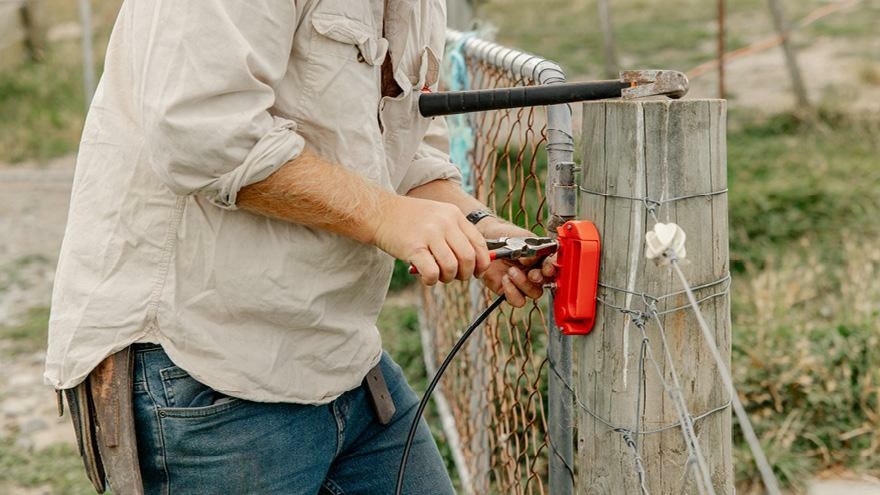
Setting up your electric fence earth system
For an effective electric fence, a correctly installed earth system is essential along with a mains unit.
To offer helpful advice and tips on setting up an earth system, we spoke to Ashleigh Trent, Key Account Manager – Livestock from Datamars.
Ashleigh begins by explaining how an electric fence works, with a red and green terminal on the mains unit. The red terminal provides power to the fence while the green terminal is the earth. To receive an electric shock, an animal must touch the fence resulting in the voltage passing from the red terminal through the fence and the soil to reach the earth system, travelling up the cable to the green terminal on the energizer to complete the circuit.
For an earth system you’ll need to purchase earth rods, underground insulated cable and clamps. To make this job easier, Speedrite offer an Earth Kit which includes three earth rods and three clamps. An option for underground cable is Speedrite’s Extreme Underground Cable.
Insulated cable is a must as it protects the cable underground from rust and deterioration from, for example, agri chemicals and fertiliser. For placement, Ashleigh suggests, to protect the cable and earth systems longevity, lay it where animals can’t stand on it.
The number of earth rods you’ll need is determined by the size of the fence unit and soil type, which will be from 3 to 15 rods, each spaced three metres apart and joined together with cable. The cable is connected to the earth rods by the clamp. The cable then continues until it joins the green terminal on the fence unit.
The earth system will not operate effectively without moisture. Placing your earth system in a wet area is best. By having the rods manufactured at two metres long, they are long enough to reach the water table underground in most conditions. Be sure though to drive the rods into the soil, leaving at least 100mm depth above ground.
For your earth system to get the moisture it needs, Ashleigh offers a great tip. When the earth system is initially installed, it does not need to be placed right beside the fence’s mains unit. A cable of up to one kilometre can be laid to allow the earth to be placed, for example, near a drain, creek or irrigation dam. If that’s no good and the summer dry affects your earth system, you can irrigate your earth to help keep it wet.
If you have an earth system that is not working at its capacity, it could be that it’s too dry or not big enough for the fence system. If you have recently expanded your fence line or upgraded to a more powerful unit, remember to ensure you earth system is up to spec.
For assistance with testing you earth system, contact your local PGG Wrightson Technical Field Representative for assistance. For new componentry to upgrade your earth system, or to purchase a new one, go online here.



